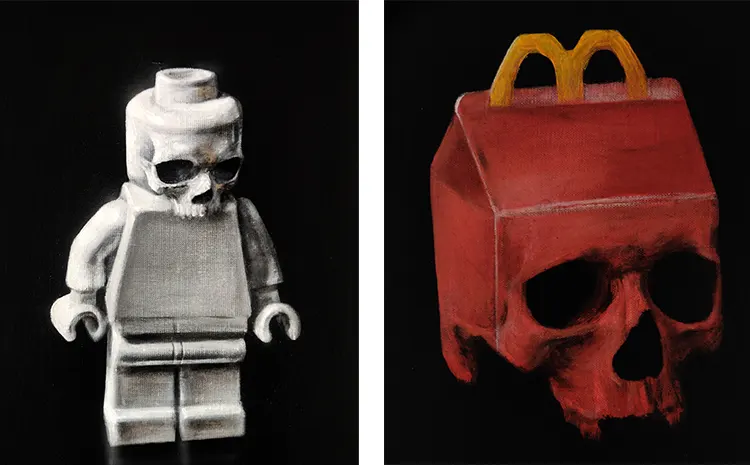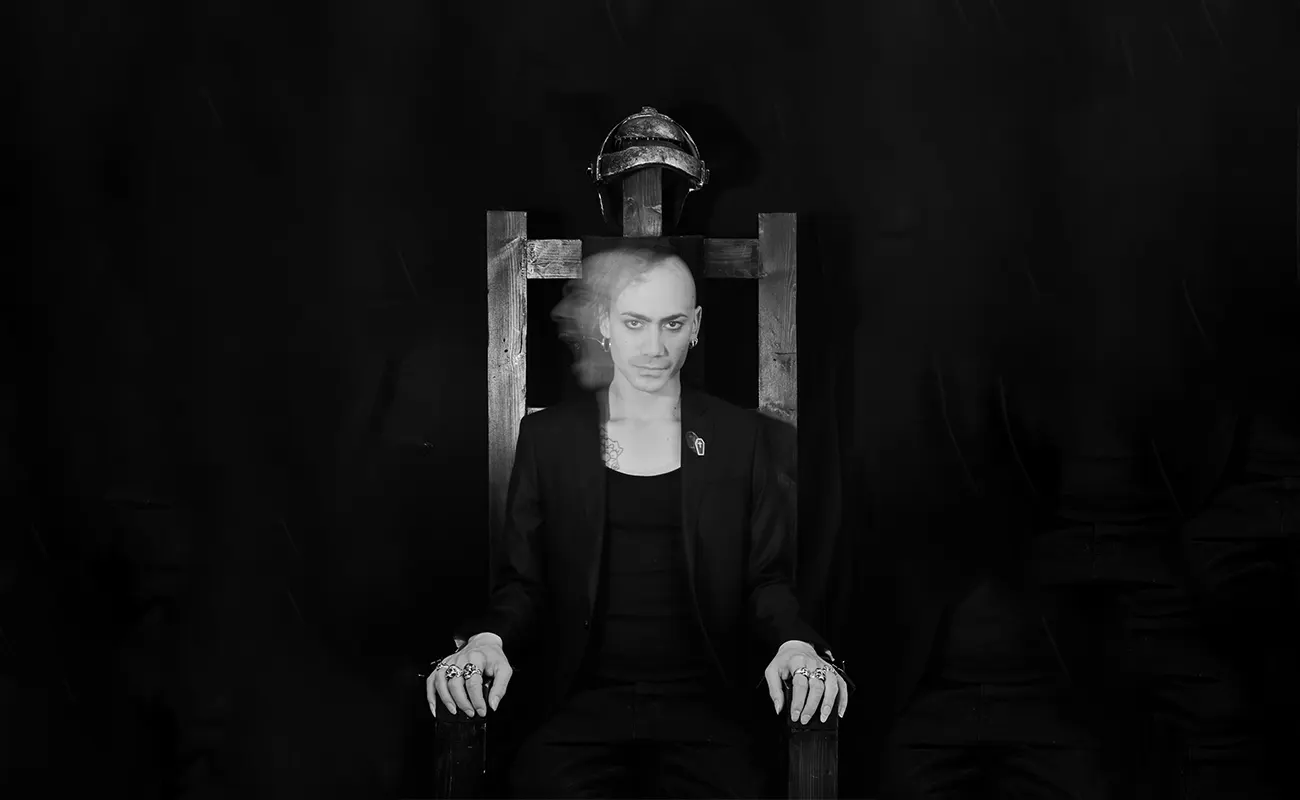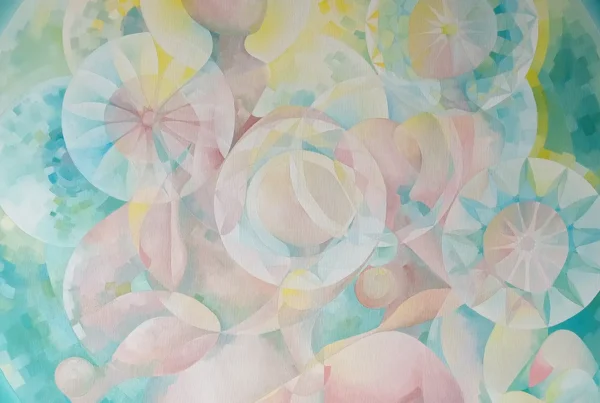“My thematic of paintings almost always revolves around childhood, I’d say most of my paintings are made to impress my inner child.”
Adrien Conrad: The Makeup Artist Turned Full-Time Painter
Adrien Conrad, a 36-year-old artist based in France, has been a full-time painter since 2019. Prior to dedicating his life to the canvas, Conrad worked as a makeup artist and prop maker, with a particular focus on macabre creations. His specialization in zombies enabled him to make a living out of skillfully replicating decay, rotting flesh, and putrefaction.
Conrad’s background in makeup artistry has influenced his approach to painting, as he finds parallels between zombies and great works of art. He observes similarities in the thick textures, transitions from shiny to matte, and the transparency found in both zombie makeup and classical paintings, such as the self-portraits of Rembrandt.
When asked about his inspiration to become an artist, Conrad humorously paraphrases Ray Liotta in Goodfellas: “As far as I can remember, I always wanted to be a rockstar.” Though his musical aspirations never materialized, he discovered the powerful impact of Van Gogh’s work and the rockstar-like status the artist achieved. Conrad also developed a fascination for framed paintings, believing that even the most mundane objects, when placed on a stretched canvas and framed, elicit a sense of reverence.
Turning to painting as a cathartic release during a teenage heartbreak, Conrad eventually chose to pursue art full-time, knowing that it was the one thing that would never bore him. He acknowledges that this decision was a leap of faith, as he did not know if he would ever be successful, but he felt that if he did not dedicate himself to it fully, he would regret it for the rest of his life.
Describing his artistic style as Punk-Romanticism or Post-Baroque, Conrad draws inspiration from neo-expressionism. His work frequently explores themes related to childhood, often seeking to impress his inner child. Although the prevalence of skulls in his paintings may not make this connection immediately apparent to viewers, Conrad sees the skull as a symbol of childhood discovery, representing the realization of one’s own anatomy and mortality. Through his art, Conrad aims to capture the transition from absolute innocence and infinite possibility to the stark reality of being a mortal being in a vast, empty universe. This exploration of the loss of innocence and the mechanisms we employ to cope with it is a theme he plans to work on throughout his lifetime.

The Artistic Style of Adrien Conrad: Punk-Romanticism and Childhood Themes
In Adrien Conrad’s artistic practice, he is inspired by the seemingly mundane, transforming everyday objects like skulls, toys, and pop culture characters into visually captivating works. He often chooses to create art that brings him joy and that he can live with. Occasionally, his work takes on a more introspective nature, delving into his teenage experiences with depression through cathartic self-portraits. Conrad acknowledges his own growth, expressing hope that he will continue to mature as an artist.
For many years, Conrad has favored acrylic paint as his medium of choice. He finds its durability and quick-drying properties particularly well-suited for his technique, which often involves layering multiple applications. Although he admires the fluidity, depth, and sophistication of oil painting, he perceives it as an “adult medium” and feels a certain affinity with the youthful nature of acrylics. His playful attitude towards art is further evidenced by his self-proclaimed “Peter Pan Syndrome,” eschewing traditional adult responsibilities in favor of creative pursuits.
Previously, Conrad also experimented with sculpting and crafting unconventional objects using silicone and resin. However, he developed allergies to various materials due to working with toxic products in unregulated environments. This experience has made him extremely cautious about the use of hazardous materials, often urging others to prioritize safety when engaging with potentially harmful artistic mediums. Consequently, Conrad has refocused his creative energy on acrylic painting but remains open to exploring new mediums in the future.
Having his studio located within his residence has been both a blessing and a challenge for the artist. While he recognizes that creating art can be a solitary endeavor, he has come to appreciate the advantages of working from home. By fostering connections and frequently engaging with fellow artists, Conrad has found a balance between his personal workspace and the broader artistic community.
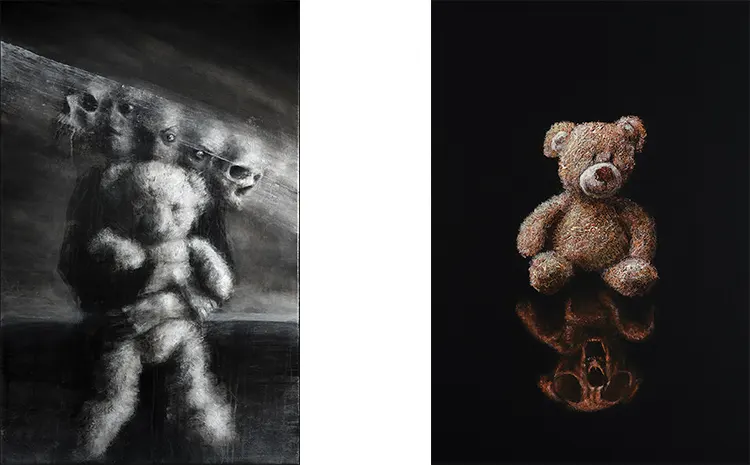
Inside Adrien Conrad’s Home Studio: Organized Chaos and Artistic Influences
Certainly, distractions are a ubiquitous part of an artist’s life, and Adrien Conrad is no exception. His home studio is situated within close proximity to modern conveniences, such as a sofa, refrigerator, and television, as well as the ever-present allure of social media platforms like Instagram. Despite these diversions, Conrad appreciates the flexibility and convenience of working from home. Being a mere ten feet away from his studio enables him to balance leisure and work effectively. He thrives during the early morning and later in the day, while the post-lunch period seems to stifle his inspiration. If given the choice, he would even consider consuming nutrient-packed pills to bypass the lethargy induced by digestion.
Conrad’s studio is a testament to his appreciation for organized chaos, a concept inspired by the legendary artist Francis Bacon. While he ensures that his tools and materials are accessible, the workspace itself undergoes a thorough cleaning only once a month. This seemingly disordered environment, according to Conrad, has a life of its own; one must maintain a symbiotic relationship with the chaos in order to locate misplaced items.
When it comes to artistic influences, Conrad has a deep admiration for Rembrandt’s oeuvre. He considers the Dutch master’s works as portals to parallel universes where one could easily spend a lifetime. The rich textures and vivid portraits have set the benchmark for Conrad’s own artistic aspirations. Fortuitously, he resides a mere forty-minute journey from the Louvre, where he can admire Rembrandt’s masterpieces in person.
Other significant influences in Conrad’s life include Francis Bacon, whom he wishes he could have shared a drink with, as well as contemporary figurative and landscape painters he encounters on Instagram. Among these are Yann Pei Ming, Adam Riches, Robson, and Pangborn. He also acknowledges the impact of The Simpsons and the music of The Cramps and The Residents on his artistic sensibilities, aiming to infuse his paintings with the same “weird and ‘howling at the moon’ vibe” he experienced while listening to these musicians.
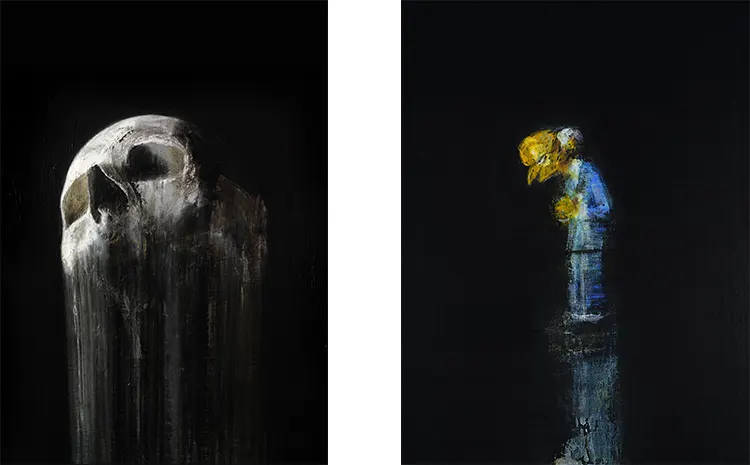
Adrien Conrad’s “Innocence and Thereafter”: A Contemporary Vanitas Painting
Among the array of captivating works by Adrien Conrad, one painting, titled “Innocence and Thereafter,” stands out for its endearing simplicity and evocative strength. This piece depicts a teddy bear cradling a human adult skull, both situated beneath an arch reminiscent of a medieval vanitas painting Conrad once encountered in a museum. Surrounding these central figures is an expanse of empty space, a deliberate choice by the artist to depart from the sometimes claustrophobic and dark nature of his other works.
The desaturated palette of the painting is punctuated by subtle hints of pink on the teddy bear and faint color in the background. This choice not only ensures visibility in dimly lit rooms, but also symbolizes the gradual fading of a child’s boundless, colorful imagination. Conrad’s composition serves as a contemporary interpretation of traditional vanitas paintings, fusing objects that evoke the passage of time, the loss of innocence, and the end of childhood magic.
In addition to his existing accomplishments, Conrad has an extensive list of projects he aspires to bring to life. Two notable achievements include having one of his designs immortalized as a tattoo and a brewery featuring his artwork on one of their products. These experiences left him feeling elated, akin to a rockstar. One of Conrad’s current goals is to exhibit his unique blend of Punk Romantic French art in the United States, eagerly inviting galleries to consider showcasing his work.
Conrad also envisions a future where he can move beyond figurative painting and focus on creating large, unconventional landscapes and skylines. As he continues to refine his technique, he hopes to embrace the role of a sophisticated romantic apocalyptic landscape painter, allowing his creative spirit to flourish in new and uncharted directions.
